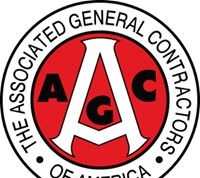New York, NY – RealEstateRama – The NYU Furman Center released a brief today showing an overall decline in residential evictions filed in New York City Housing Court between 2010 and 2017. The analysis draws on records from New York State’s Office of Court Administration, and provides new insight on landlord-initiated cases filed in housing court, revealing trends for eviction filings, judgments (including settlement agreements), and executed warrants. The report also explores geographic disparities in eviction filings across New York City’s neighborhoods, noting that rates in certain areas remain relatively high. Read the data brief, Trends in Housing Court Eviction Filings.

“Our analysis of New York City’s evictions data helps us understand where, when, and why landlords are filing for eviction,” said Kathy O’Regan, Faculty Director at the NYU Furman Center. “This insight provides us with a baseline to assess the effectiveness of interventions to promote housing stability.”
The analysis shows that citywide, the total number of eviction filings is decreasing. In 2017, private landlords initiated 176,590 eviction filings, which represents a decrease of 4.6 percent from 2016 and an overall decrease of 7.8 percent from 2010. Of New York City’s five boroughs, the Bronx was the only one that deviated from the citywide downward trend; its number of filings increased between 2010 and 2016, and it ended 2017 with more filings than in 2010. In fact, all sub-borough areas within the Bronx saw the same or an increased eviction filing rate between 2010 and 2017.
Lawful evictions in New York City fall into two categories: nonpayment cases, in which the landlord makes a claim to rent owed, and holdover cases, in which the landlord makes some other claim. Landlords must warn tenants prior to filing for eviction, and provide them with the opportunity to address the stated cause. If the tenant does not, the landlord can file for eviction, receive a judgment, and then obtain a warrant for eviction if the judgment is in their favor. In its brief, the NYU Furman Center focused only on cases (excluding co-ops, condos, and public housing) where landlords filed for eviction.
Citywide, 84.3 percent of 2017 eviction filings were nonpayment cases. While the number of nonpayment filings has decreased steadily since 2011, the number of holdover cases increased annually from 2010 to 2016 and then declined from 2016 to 2017. Of all non-payment and holdover filings, 60.3 percent of 2016 cases resulted in judgments, a 0.2 percent increase from 2015 and a 9.4 percent increase from 2010. The share of holdover cases resulting in judgments rose significantly faster than the overall rate, with 47.2 percent more cases resulting in judgments in 2016 than 2010.
The Bronx was home to the three neighborhoods with the highest filing rate citywide: Highbridge/Concourse, Morrisania/Crotona, and Hunts Point/Longwood. Eviction filing rates in Brooklyn were concentrated in the central and eastern part of the borough, though rates have generally declined over time, with the exception of the Brownsville and East New York neighborhoods. Two of the three neighborhoods with the lowest eviction filing rates citywide were in Brooklyn: Park Slope/Carroll Gardens and Williamsburg/Greenpoint. Explore the filing data at the neighborhood level at CoreData.nyc.
“The decrease in housing court filings and executed warrants overall is good news for New York City,” said Matthew Murphy, Executive Director of the NYU Furman Center. “Yet there remain stark differences in eviction filing rates across neighborhoods, so further research is to understand the causes of these disparities and their potential solutions.”
When viewed alongside population demographics, building conditions, and neighborhood characteristics, eviction filings help shed light on renter instability in New York City. The NYU Furman Center plans to further illuminate the contributing factors behind city eviction trends in future research.
Read the NYU Furman Center’s brief on residential eviction filings.
For media and data inquiries, please contact:
212-998-6492














